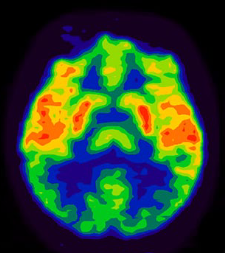Author: admin
-

A drug to make you move faster
When we are motivated we move faster. We studied the effects of a drug that stimulates receptors for the neurotransmitter dopamine (Au Yeung et al. Psychopharmacology 2024). Dopamine may be important for signalling rewards in the brain. We gave healthy people a course of the drug Pramipexole. Before and after the course, we tested their…
-

A brain area that makes us want to help other people
Humans can be altruistic, for example, working to benefit other people. We measured this kind of drive, “prosocial motivation”, by asking people to squeeze hard to earn money (Lockwood et al. Nature Human Behaviour 2024). The money would either go to themselves, or to someone else who they would never see or meet. Although healthy…
-

NMDA receptors play a dual role in working memory
How do neurons keep memory over short intervals? Our short-term memory involves many component processes. For example, it has to maintain information, bind it into items, and select parts of it when needed. In most neural networks, a neuron can be activated by other neurons, but quickly forgets about those inputs, and quickly becomes silent…
-

Gambling on an empty stomach
When we are hungry, our decisions change. We might become more short tempered, or behave rashly. We investigated what kinds of behaviours change, by studying decision making in healthy people when they were hungry, and when they were full (van Swieten et al, Brain and Behaviour 2023). We take two types of risk. In one…
-

Neurons that rapidly change their selectivity
The activity of neurons carries information because they become active only in particular situations. This is called ‘selectivity’, and it allows a group of neurons to signal the state of the world. We may remember things either by keeping neurons active, or by changing their selectivities. However, we haven’t really worked out how changing a…
-

What does the claustrum do?
Here with colleagues from physiology, we review the clinical effects of damage to the claustrum in Atilgan et al. Brain (2022). The claustrum is a thin sheet of neurons in the frontal lobe. Very few reported cases have isolated claustrum damage. In those who did, the findings don’t clearly reflect what you might expect, given…
-

Hunger increases reinforcement learning rate
Sometimes we plan ahead, thinking about future consequences of our actions. Other times, we select actions based only on their immediate reward associations. Planning ahead is crucial to staying healthy, but might be affected by motivation. We asked whether hunger affects planned vs directly reinforced action (van Swieten, Bogacz & Manohar Cogn. Aff. Beh. Neurosci.…
-

Frontal brain damage makes decisions less biased
Learning from reinforcement is a classic way to study how brain areas contribute to adaptive behaviour. The most frontal parts of the brain probably contribute at a very high, abstract level. In this study (Manohar et al. Cortex 2021), we asked how confident people are in what they have learned. Underside of a human brain…
-

Drugs affect subtypes of Parkinson’s disease differently
In this commentary, I discuss the implications of new work from Hanneke Den Ouden’s lab. The authors subdivided Parkinson’s disease patients into those with and without tremor, and found that learning was affected by dopamine in opposite directions in the two groups!
-

Parkinson’s medication has opposite effects on two kinds of motivation
Patients with Parkinson’s disease lack the brain chemical dopamine. Dopamine is thought to signal upcoming rewards, and this might explain why patients on treatment can develop impulse control disorders. My lab is studying two different ways to motivate people. One way is to reward or punish them based on how well they do — like…